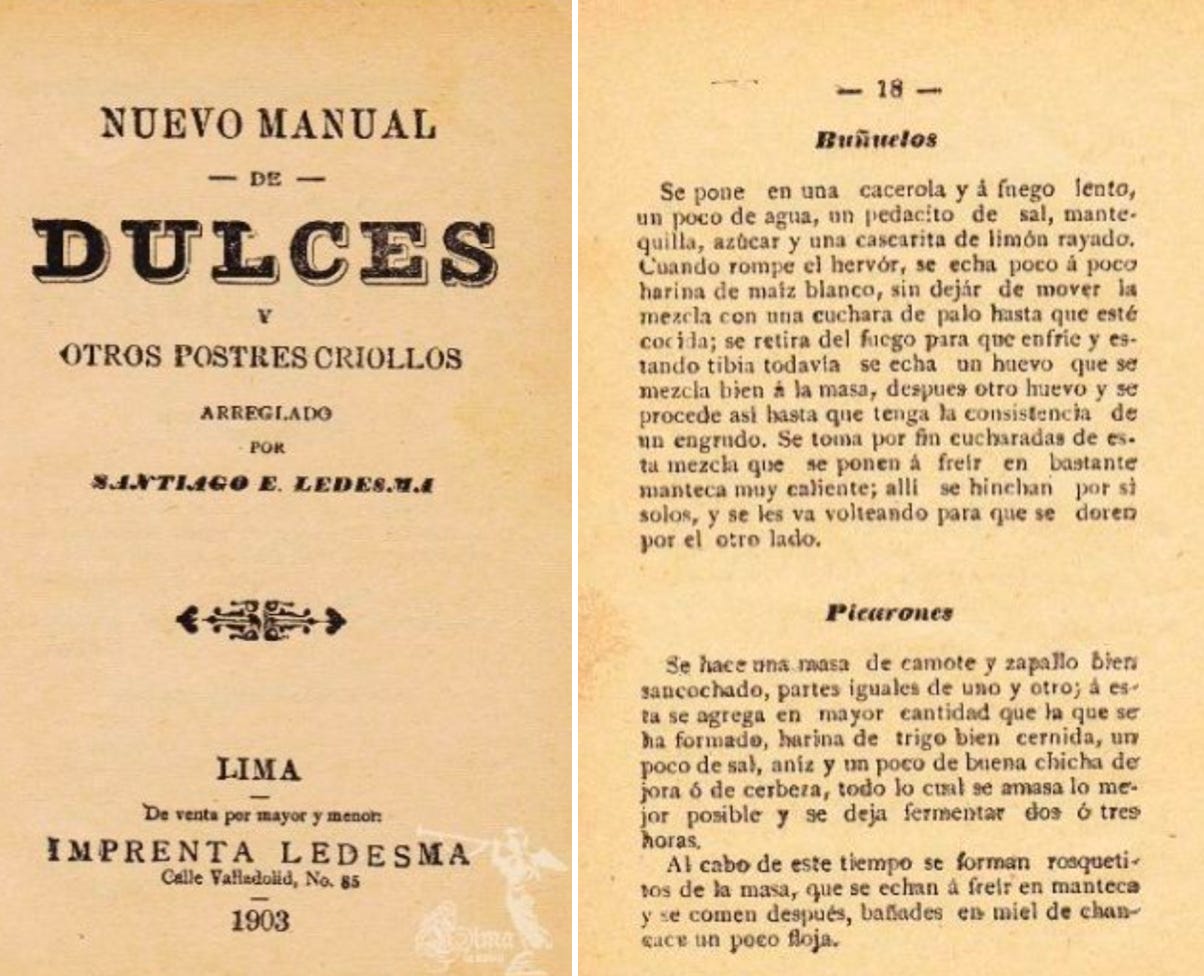Picarones
A 120-year-old recipe for Peru's doughnut-like street food fritters.
According to Peruvian food historians, picarones—the fried dough mixture of sweet potato, squash, flour, water, and spices—are the result of a long miscegenation process between Andean and colonial ingredients and techniques.
In the 1872 book Tradiciones Peruanas, Peruvian chronicler Ricardo Palma documented the routine of colonial-era street food vendors such as the Afro-descendant picaronera that sang pregones at 2 p.m. to announce the arrival of the fritters she made:
Picarones calientitos, redondos, y tostaditos, y en su miel bien bañaditos 🎵
My translation:
Warm picarones, round and toasted, and in their syrup well bathed 🎵
Peruvian singer Cecilia Barraza evokes the pregones of the picaronera:
The 1903 cookbook Nuevo Manual de Dulces y Otros Postres Criollos, a collection of traditional creole recipes from Lima, includes one for picarones:
Se hace una masa de camote y zapallo bien sancochado, partes iguales de uno y otro; a esta se agrega en mayor cantidad que la que se ha formado, harina de trigo bien cernida, un poco de sal, anís y un poco de buena chicha de jora o de cerveza, todo lo cual se amasa lo mejor posible y se le deja fermentar dos o tres horas.
Al cabo de este tiempo se forman rosquetitas de la masa, que se echan a freír en manteca, y se comen después, bañados en miel de chancaca un poco floja.
Picarones recipe, my translation:
Make a dough of well boiled sweet potato and squash, equal parts of one and the other; to this add in a larger amount than what was formed, well sifted wheat flour, a bit of salt, a bit of anise and a bit of good chicha de jora or beer, all of which is kneaded as much as possible and then left to ferment for two or three hours.
After that time shape the dough into rings, which are thrown to deep-fry in lard, then eaten later, bathed in slightly runny raw sugar syrup.
However, the origin of picarones dates to precolonial times, when Peru’s Indigenous peoples fried mashed sweet potatoes and squash. As the recipe evolved creole cooks added flour, water, spices, and yeast instead of chicha de jora (fermented corn beer).
Today, food cart vendors such as Picarones Mary are popular in Lima, but the recipe and cooking method for picarones remains largely the same as a century ago.
I love that throughout their evolution picarones were always plant-based.




Oh...how wonderful it would be to visit Lima someday and enjoy Picarones, freshly made and served somewhere on a colorful street...